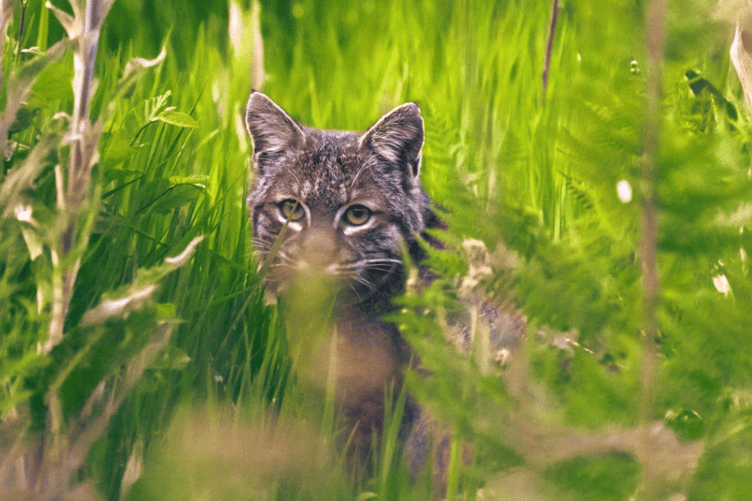A NEW study has determined that the European wildcat - absent from England for more than 100 years - could be successfully reintroduced to the South West.
Released by the South West Wildcat Project - a partnership between the Devon Wildlife Trust, Forestry England and the Derek Gow Consultancy - the two-year study concluded that not only is the South West of England a feasible location to establish a population of Felis silvestris, but that there is an appetite among the public for just that.
The South West was first identified as an area potentially suitable for re-establishing wildcats in 2019, with the South West Wildcat Project being established soon thereafter.
And for the past two years, the Project has been investigating whether European wildcats could be reintroduced to the area.
The study found that the South West contains enough woodland cover connected by other suitable habitat to support a sustainable wildcat population; it highlights a well-connected landscape of habitat across mid Devon as potentially the most suitable for reintroductions to take place.
A significant majority of people in the South West expressed positive views towards wildcat reintroduction to their region.
Two separate surveys were conducted by independent researchers at the University of Exeter.
In one, 71 per cent of 1,000 people (representative of the age and gender of the region’s population) liked the idea of wildcat return.
In the other, 83 per cent of 1,425 who responded to an online questionnaire expressed positivity towards wildcat reintroduction.
‘We believe that wildcat releases in the South West of England are feasible and would have a positive impact on the region’s wildlife and wild places’, the Devon Wildlife Trust said.
‘However, a great deal of work remains to be done before this can take place.
‘It is unlikely that any reintroduction of the animals could take place before 2027 at the earliest’, the charity went on to say.
Wildcats were once found throughout Great Britain but were extinct from England and Wales by the mid-18th century.
Even in their final Scottish haunts they are critically endangered, and subject to urgent species recovery action.
Their scientific name Felis silvestris translates as ‘Cat of the woods’, hence their old English name – ‘woodcat’.
And though on the surface they may seem similar to a domestic tabby cat, they are, in actual fact, genetically distinct, being up to 25 per cent bigger, with chunkier bodies, longer legs and thicker tails.





Comments
This article has no comments yet. Be the first to leave a comment.